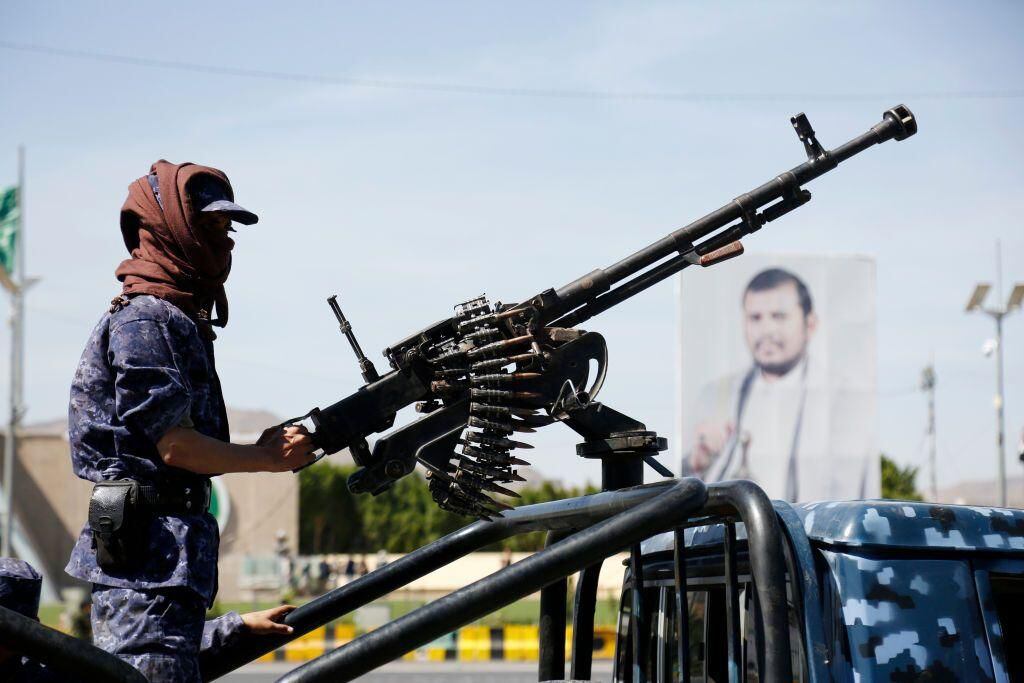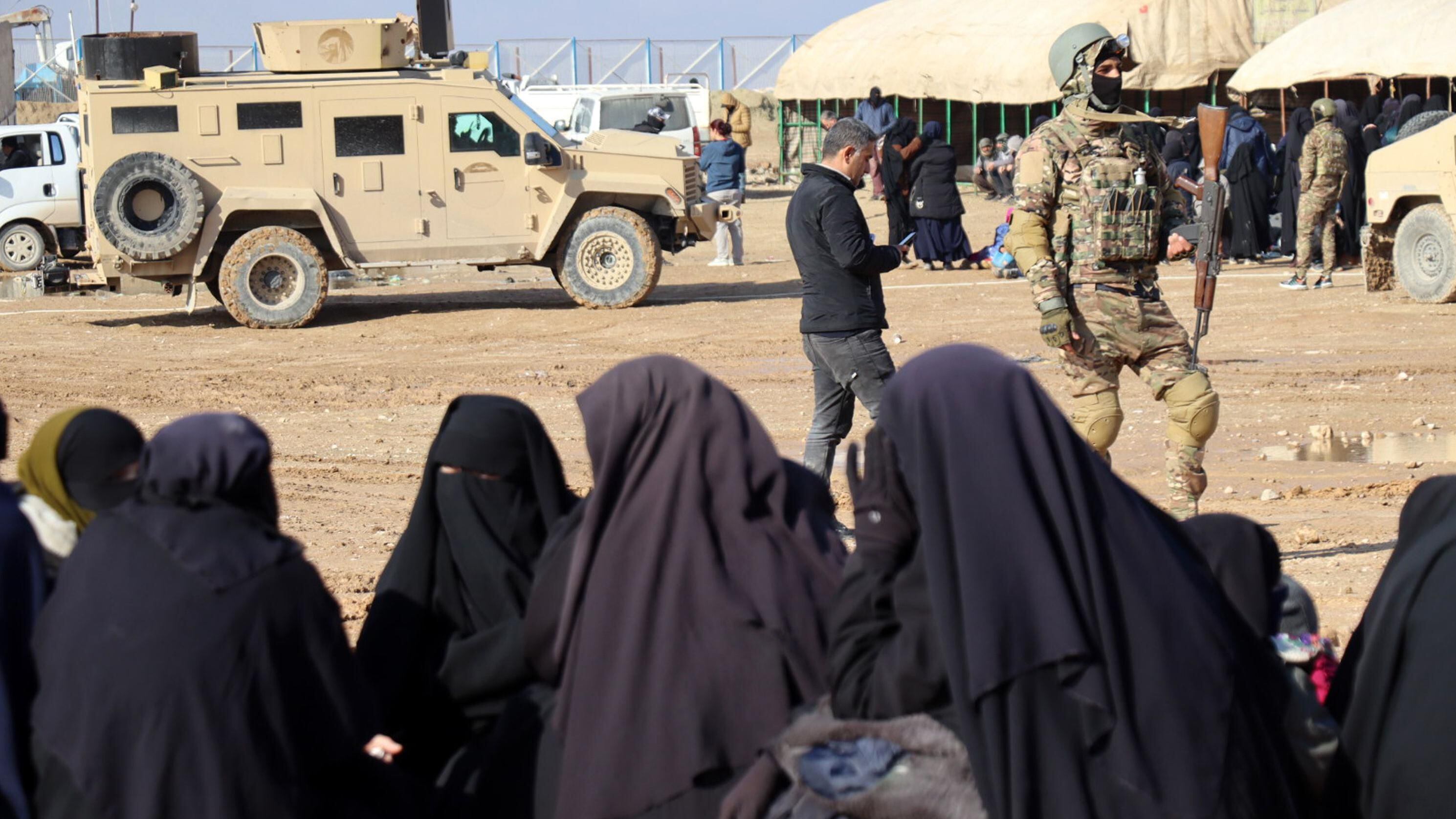There are growing signs that the conflict between Israel It is Hamas It is spreading throughout the Middle East.
The latest incident occurred overnight from Saturday to Sunday, when three American soldiers were killed and at least 40 were injured in a drone attack in Jordan, near the border with Syria.
LOOK: Siege of Paris: Why farmer protests are spreading across Europe
A group calling itself the Islamic Resistance in Iraq claimed responsibility for the attack.
“There have been frequent drone attacks by Iranian-backed militias against US bases, but this is the most serious” says Frank Gardner, BBC security correspondent.
The White House claims that Iran is behind this and other operations, an accusation that the Tehran regime denies.
The expansion of the conflict is perceived as a setback in the US strategy of recent months, whose objective was precisely to prevent the escalation of the Gaza conflict into neighboring countries.
“The big issue here is that President Biden’s deterrence strategy has failed,” Fawaz Gerges, professor of International Relations at the London School of Economics and Political Science (LSE), told the BBC.
“There is now a real danger that the war in Gaza will escalate into a wider regional conflict”he adds.
An expanding conflict
One of the elements that make the situation more complex is that there is a multiplicity of active organizations spread across different countries in the region.
For example, the weekend attack that claimed the lives of three American soldiers was carried out by a network of organizations, not a single actor.
“The group calling itself the Islamic Resistance in Iraq is part of a broad network of Iranian-backed militias that have been armed, financed and trained by Iran’s Revolutionary Guard Corps,” explains Frank Gardner.
“By operating in Syria, Iraq, Lebanon and Yemen, they oppose both the Israeli and US military presence in the region”he adds.
Shortly after Hamas’ attack on Israeli territory on October 7 and Israel’s subsequent military response against the Gaza Strip, the US deployed warships to the Mediterranean Sea to warn all parties involved not to escalate the conflict.
However, the conflict went much further.
“The reality is that there is a fire burning on several fronts”says Lyse Doucet, the BBC’s chief international correspondent.
We tell you what they are.
1. Lebanon and the role of Hezbollah

The border between Israel and Lebanon The balance has been precarious for years, since the end of the war between the two countries in 2006.
Now, in the midst of the war in Gaza, this border has become one of the most sensitive areas in the context of the expansion of the conflict.
In recent months, Israeli forces and the radical Islamic group Hezbollah, a Lebanese Shiite movement supported by Iran, have constantly exchanged attacks.
In this scenario, the United States fears that Israel could attack or invade Lebanon and urged its ally to avoid such action.
If that were to happen, the region would reach a much higher level of conflict, with unexpected consequences for the West.
2. The Houthis and tension in the Red Sea

He Red SeaMeanwhile, it became a hotbed of violence after the Houthis, a rebel group that controls much of Yemen and is backed by Iran, launched a series of missile attacks on Western cargo ships.
Since November, Yemeni militias have attacked ships passing through the Bab al-Mandab Strait, a 32-kilometer-wide channel that separates Yemen, on the Arabian Peninsula, from northeast Africa.
The insurgents say they are targeting ships with links to Israel in retaliation for the war in the Gaza Strip.
In response, the US and UK launched successive rounds of attacks against the Houthis.
One of the last incidents in the area occurred on January 26, when a tanker carrying fuel, owned by the company Trafigura, one of the largest energy traders in the world, was hit by a missile off the coast of Aden.
Hundreds of gigantic container ships are following an alternative route that involves an extensive and costly detour around Africa’s Cape of Good Hope.
3. Iraq and US bases

In case of IraqRadical groups have launched drones and rockets at US bases such as Asad Air Base in western Iraq, an attack that caused traumatic brain injuries to two US soldiers.
In retaliation, the US launched a series of airstrikes on January 23.
The conflict in that country has been going on for months.
Bases housing US forces in Iraq and northeast Syria have been repeatedly attacked, prompting the US military response.
These attacks are seen as part of Iran’s indirect conflict with the United States.
Around 3,400 members of the US-led international coalition against the self-proclaimed Islamic State are in Iraq and Syria, making them potential targets for attacks.
4. Syria and its connection with Iran

Syriain turn, it is also part of the ramifications that the war in Gaza is having for the rest of the region.
US planes bombed a weapons depot apparently belonging to the Islamic Revolutionary Guard Corps in November.
A few days later, they attacked a training center and a hideout believed to be linked to Iran, in eastern Syria.
In December, an Israeli airstrike on a suburb of Damascus, the Syrian capital, killed Iranian General Seyed Razi Mousavi, a former adviser to the paramilitary Iranian Revolutionary Guard in Syria.
In mid-January, another Israeli attack on the Syrian capital destroyed a building allegedly used by Iranian agents.
These types of attacks continue to be repeated in what is considered another expression of the conflict between the US and Israel against Iran.
_______________________________
A big challenge for the US
Few analysts expect the United States to decide to directly attack targets on Iranian soil, because that would raise tensions in the region to a much higher level and could have high-risk consequences for the parties involved and the rest of the world.
In fact, The last time Iran and the United States faced each other directly was in the 1980s.when Washington and Tehran engaged in military offensives in the waters of the Persian Gulf, where Iranian ships and oil platforms were attacked.

This level of escalation seems to be off the chessboard for now, but the truth is that things are getting complicated.
The death of the three US soldiers in Jordan comes at a time when the US and its allies They try to negotiate a pause in the war between Israel and Hamas and a hostage agreementin the hope that it will end the war or at least lessen the fighting enough to reduce tensions elsewhere.
An outbreak of violence involving the United States and Iran could destroy hopes of restoring calm before Ramadan, the Muslim holy period that begins in March.
In this context, one of the biggest challenges that Joe Biden’s government faces is, according to analysts, the definition of a strategy that allows it to respond to constant attacks in a manner proportional, dissuasive and, at the same time, does not intensify or expand the conflict.
Source: Elcomercio
I am Jack Morton and I work in 24 News Recorder. I mostly cover world news and I have also authored 24 news recorder. I find this work highly interesting and it allows me to keep up with current events happening around the world.

:quality(75)/cloudfront-us-east-1.images.arcpublishing.com/elcomercio/TFRKIWIF2BDKDIAM3CYVOQCKZU.jpg)



:quality(75)/cloudfront-us-east-1.images.arcpublishing.com/elcomercio/5XVZ7WGE4FB7TDRH3DESBISBRA.jpg)

